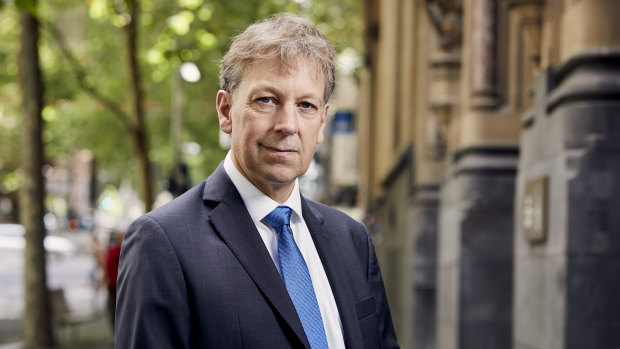By Nick Toscano and Mike Foley
Mining giant Rio Tinto has backed the federal government’s commitment to a 43 per cent emissions cut by 2030, saying it delivers the support industry needs to continue investing aggressively in decarbonising local operations.
As negotiations go down to the wire in Canberra over Labor’s signature climate reforms, Rio Tinto chief executive Jakob Stausholm said the level of the government’s ambition was crucial for the company as it embarked on plans to slash its direct carbon footprint in half by 2030.

Rio Tinto CEO Jakob Stausholm said: “I am very happy with the direction they are taking.”
“We can’t do it without societal support and the government plays a vital role there, so I am very happy with the direction they are taking,” Stausholm told this masthead.
“Whether you go with the legislative route or you go another route, I’ll leave it to people who know about that ... but what I know is that the new government’s climate change policies are very aligned with our target.”
The backing of Rio Tinto, the nation’s largest producer of iron ore, marks a significant endorsement of Labor’s climate agenda and comes as federal Climate Change and Energy Minister Chris Bowen seeks support from the Greens and crossbenchers to enshrine its climate goal in law.
The government’s Climate Change Bill sets a target to cut greenhouse emissions by 43 per cent from 2005 levels by 2030 and reach net-zero emissions by 2050.
While Rio Tinto has committed to spending $US1.5 billion ($2.1 billion) on wind and solar energy across its flagship iron ore mines in Western Australia’s Pilbara region to reduce the use of natural gas, the company faces a more challenging task to decarbonise its emissions-intensive east-coast aluminium assets, which rank among the country’s biggest energy users.
“We would like to have green energy ... but it also needs to be 24/7, and that’s where the grid and other parts of the energy system come in,” Stausholm said. “To develop that, you can only do that together with governments in the states and the federal level.”
Labor has already detailed its $20 billion Rewiring the Nation plan, which will provide cheap loans to private companies to build clean power generation assets and expand the eastern seaboard’s network of electricity poles and wires to reach a target of 82 per cent renewable energy by 2030.
Bowen said this week he would release in coming days details of plans for a beefed-up “safeguard mechanism”, which will tighten emissions caps on the country’s 215 biggest polluters, which collectively generate about 28 per cent of the nation’s greenhouse gases.
The companies, including Rio Tinto, would have a range of options to cut their pollution, including green technology, emissions offsets or emissions capture. For example, a smelter could replace its gas-fired furnaces with clean technology, or it could offset emissions by investing in projects that use natural processes such as tree planting to sequester carbon from the atmosphere into trees or the soil.
Another option would allow a company to offset its emissions by buying credits earned by other polluters who had cut emissions beyond their pollution limits and had extra to spare.
Rio Tinto in June called for proposals to develop a massive four gigawatts of renewable electricity to decarbonise its two alumina refineries and one smelter in Gladstone, Queensland, by 2030. Last year, the company more than tripled its 2030 carbon-reduction targets to 50 per cent, from 15 per cent, and committed to spending $US7.5 billion on decarbonisation investments by the end of the decade.
Cut through the noise of federal politics with news, views and expert analysis from Jacqueline Maley. Subscribers can sign up to our weekly Inside Politics newsletter here.